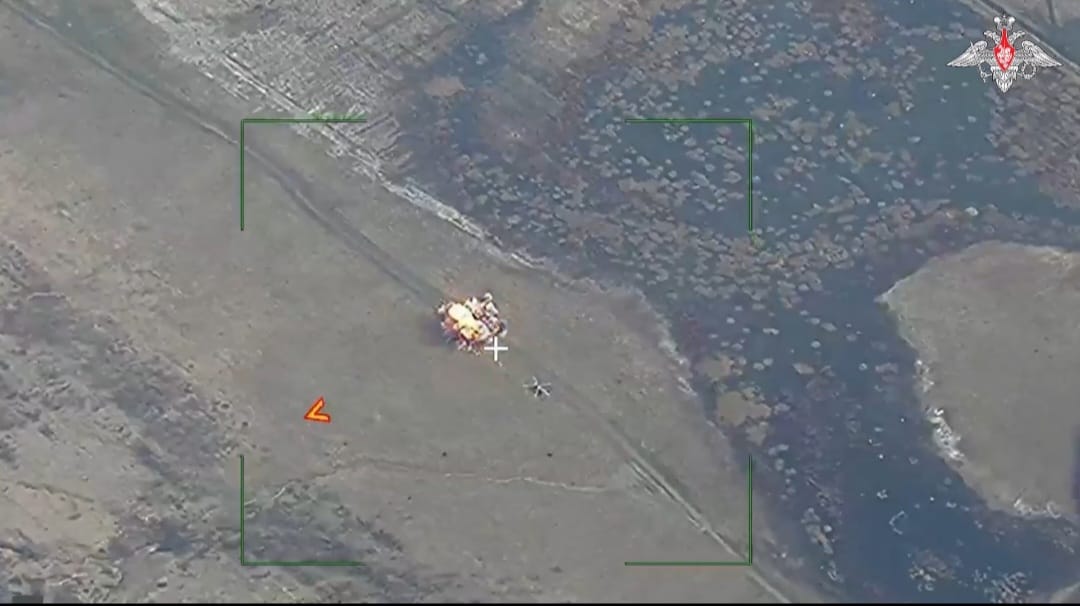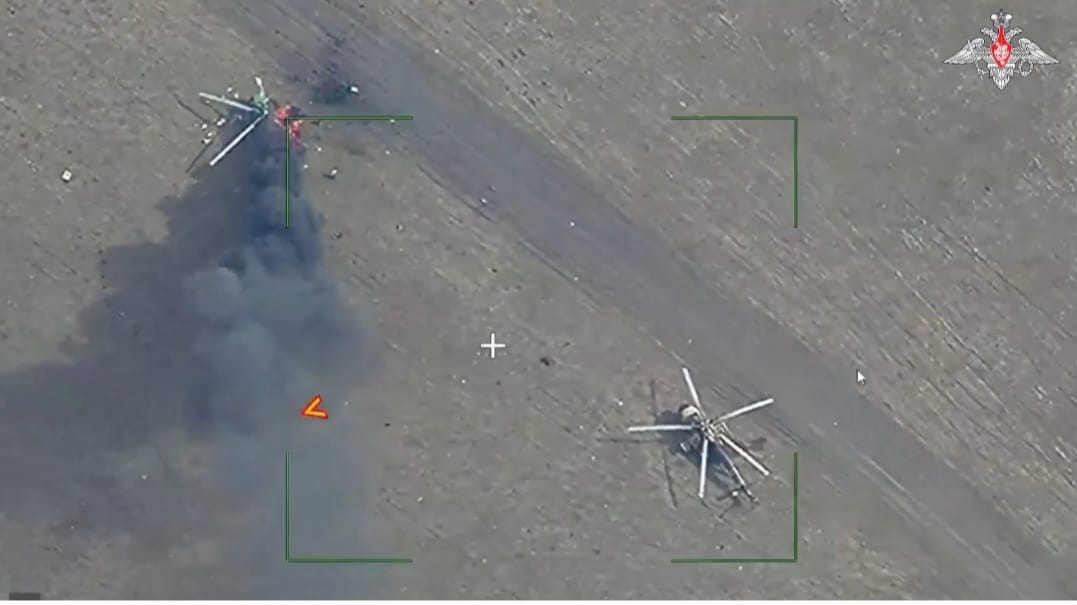In a rare tactical attack, three Ukrainian helicopters were destroyed on the ground by Russian artillery strikes near the frontlines, all while being watched before and after their destruction by overhead surveillance. The entire footage and the nature of the action make it a one-of-a-kind attack during the entire war, besides marking a further depletion of Ukraine’s meager air force.
Moreover, it also largely validates previous EurAsian Times analysis about the resurgence of Russia’s unmanned aerial intelligence-surveillance-reconnaissance (ISR) capabilities with the introduction of the Sirius high-altitude long-endurance (HALE)-class unmanned combat aerial vehicle (UCAV).
Other articles also talked about the Russian doctrine of using drones, ground troops, and aircraft in a Reconnaissance Strike Complex (RSC). Various assets are linked in real-time and fuse intelligence using the Strelets data networking and exchange system to conduct strikes by high-precision, long-ranged weapons.
Both the drone and this doctrine – and possibly even massive Ukrainian tactical errors – appear to have worked together in this latest attack.
RuMoD Footage
The Russian Ministry of Defense released footage on Wednesday showing three Ukrainian helicopters, which could be either Mil Mi-8 or Mi-17 tactical troop transport helicopters, on a “concealed landing pad.” This pad had been “set up to refuel the aircraft and refill ammunition,” suggesting the helicopters could be fitted with rocket pods for fire support purposes.
“The located landing pad with enemy helicopters was immediately struck by a cluster munition,” RuMoD said. These could be rockets fired from the Uragan or the Tornado-S multiple launch rocket system (MLRS), based on open information about the types of warheads both the platforms’ rockets can carry.

The other footage showed the two remaining helicopters – after the other flew away according to reports and claims on leading Russian and Ukrainian Telegram groups – beside each other. These two were also destroyed one after the other by either small artillery shells or loitering munitions like the Lancet. This fact remains unclear, but a close up on the small white object seen streaking down on the aircraft indicates it is a kamikaze drone.
Russian Tactical Calculations
Russian battlefield planners are unlikely to use costly and scarce artillery rounds for destroying platforms with softer bodies than land armored vehicles like helicopters.
It is a different matter that even the former has been successfully destroyed by Lancets on some occasions. But using a real-time maneuverable kamikaze drone is more suitable for an aerial platform on the ground that might also take off and start maneuvering.
Russian and Ukrainian military bloggers (‘Milbloggers’) on Telegram have said the helicopters belonged to the Ukrainian Army’s 12th Army Aviation Brigade and were at a field in Novopavlivka, 56 km (35 miles) west of the frontline near Avdiivka. However, this fact cannot be officially verified, and RuMoD has not commented on the precise location or the exact nature and type of the weapon used.
Ukraine’s Options
Ukraine has the option of deploying more air defense systems and jammers to disrupt the RSC and jam and shoot down the surveillance drones. However, it faces a paucity of both, at least until fresh Western reinforcements arrive. Moreover, employing them solely to destroy the drones or the Strelets and even achieving success doing so wouldn’t slow down the other larger strategic elements of the Russian military and its battlefield gains.
For instance, the stunning loss of nearly a dozen Su-34 Fullbacks and three A-50U Airborne Warning and Control Systems (AWACS) still hasn’t stemmed Su-34 strikes using FAB-500 bombs strapped with Universal Module for Planning and Correction (UMPC) kits.

RuMoD publicity material continues to feature Su-34s conducting battlefield interdiction strikes. Moreover, it has also introduced other cheaper and simpler loitering munitions like the Scalpel, besides the Lancet, to have a diverse inventory of kamikaze drones. Russian commanders retain other workable options in case of individual shootdowns or a spurt of losses.
impressive strikes on Ukrainian helicopters:
"Footage of the destruction of Ukrainian Armed Forces helicopters at the jump site in the Donetsk People's Republic.Aerial reconnaissance equipment identified three Ukrainian Armed Forces helicopters that landed on a hidden field… pic.twitter.com/amxoJwC8lX
— — GEROMAN — time will tell – 👀 — (@GeromanAT) March 13, 2024
In other words, Russia is leveraging its large and intact defense base to protect the momentum of its operations from periodical tactical setbacks and equipment losses. This is a classic ‘Long War’ doctrine.
- The author can be reached at satamp@gmail.com
- Follow EurAsian Times on Google News




